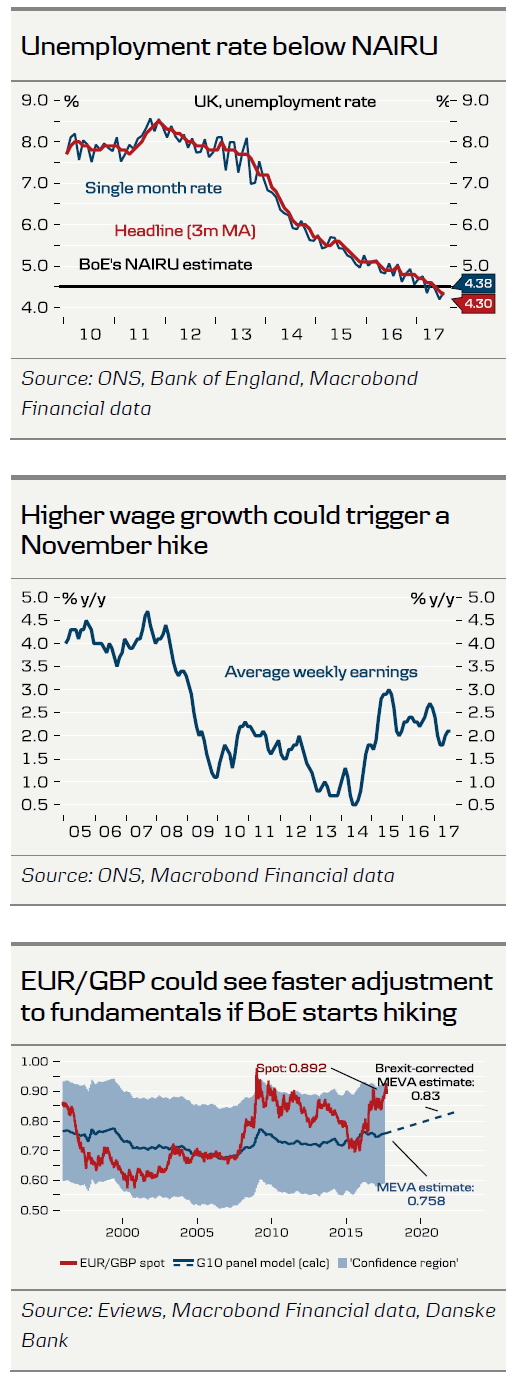Bank of England sends hawkish signal to markets
As expected, the Bank of England (BoE) maintained the Bank Rate at 0.25% and kept the targets for the government bond purchases and corporate bond purchases at GBP435bn and GBP10bn, respectively. In line with our call, the vote count for the Bank Rate was 7-2, but we were caught by surprise by the warning of a possible forthcoming rate hike ‘over coming months’ if underlying inflation moves higher and the unemployment rate moves lower.
The tightening bias challenges our view that BoE will stay on hold through Brexit negotiations due to high political uncertainty and slower growth. The policymakers have become more concerned about the combination of unemployment below NAIRU and inflation above the 2% target. CPI inflation surprised on the upside in August, as it rose to 2.9% and the unemployment rate dropped to 4.3%, the lowest rate since 1975. While BoE expects growth to remain around 0.3% q/q in the short term, it now expects CPI inflation to rise above 3% in October and the unemployment rate to decline further.
As BoE usually acts on the big meetings, the question is now whether it will hike at the next meeting in November or not. We think a hike in November is a close call but given that one condition is ‘a gradual rise in underlying inflationary pressure’, which we interpret as higher wage growth, we still think BoE will stay on hold this year. The incoming labour market and inflation data until the November meeting are going to be very important for BoE’s decision. That said, BoE has consistently overestimated wage growth in recent years and one important assumption in the projections in the August Inflation Report was higher wage growth. Our base case is now a hike in Q1 18, as BoE is less worried about political uncertainty and more focused on economic data. Market pricing seems fair, as a November BoE hike is priced in by approximately 60% and a full hike is priced in by February.
EUR/GBP: risks more evenly balanced near term
With the prospect of a BoE rate hiking cycle materialising earlier than we previously foresaw, the GBP has been brought back to life. In an environment where the EUR uptick is losing steam and the market remains stretched on GBP shorts, we have to admit that risks in EUR/GBP are now more balanced than what we had laid out (previously saw risks tilted to the upside for the cross near term).
That said, our preposition remains that EUR/GBP will have a hard time breaking significantly lower from here as Brexit uncertainty is set to be a subjugate for the GBP for an extended period of time. Near term, the cross should be capped around the 0.88 level (which prevailed before the summer uptick) but, further out, if the BoE initiates a hiking cycle, the adjustment towards fundamentals – our Brexit-corrected Medium-Term Valuation (MEVA) estimate for the cross is around 0.83 – could take place faster than our current forecasts (0.88 in 12M) project.













